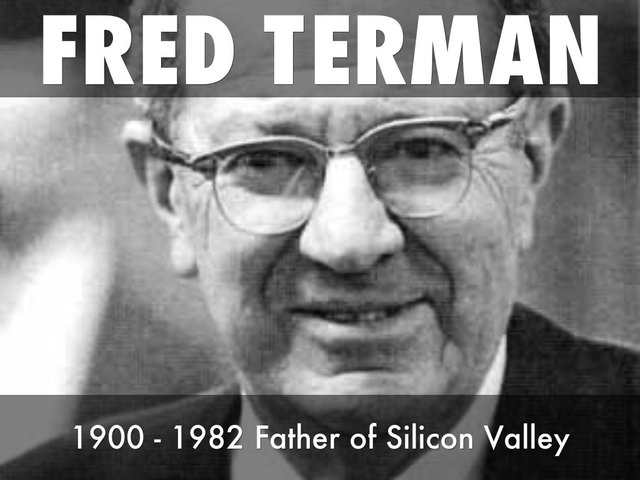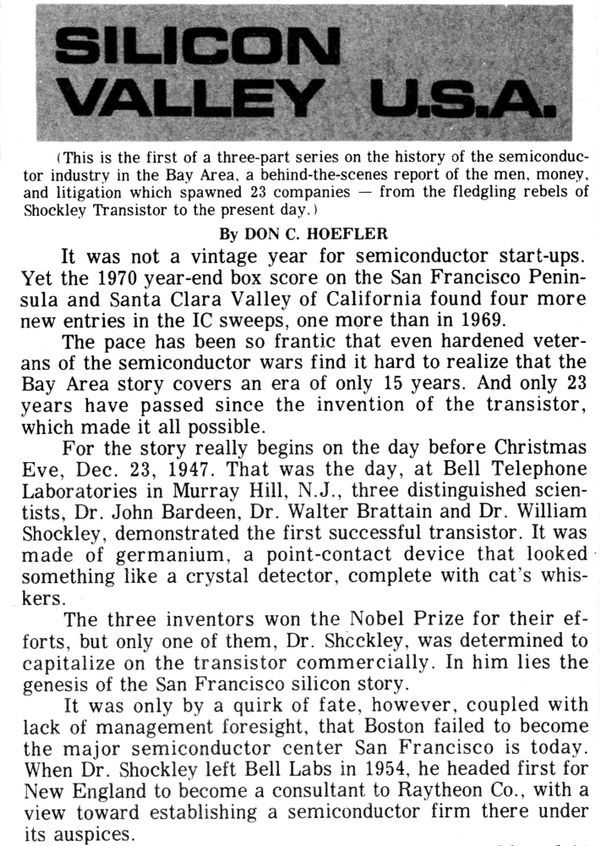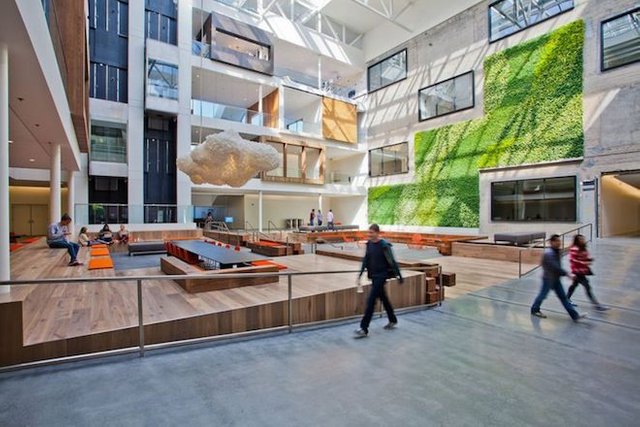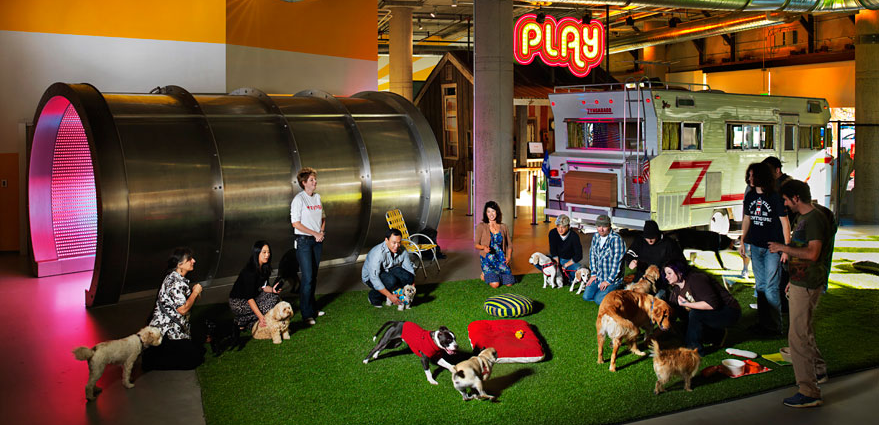Silicon Valley 💻
Silicon Valley
![]()
Silicon Valley refers to the state-of-the-art industry cluster located in the southern part of California's San Francisco Bay Area, on the west coast of the United States, of which San Jose is the largest city.
Strongly related to the presence and influence of Stanford University, Silicon Valley has inspired many science parks in Europe, Sophia Antipolis, Inovallée Euratechnologie or cluster Paris-Saclay, under construction since 2011 and south of Paris Silicon Mountain in Buea in southwestern Cameroon.
Although this region is not a valley in itself, the term often refers to a geographical area characterized by the presence of large companies operating in advanced technologies.
As Silicon Valley is defined by its economic activity, its boundaries are unclear and constantly evolving. The term does not correspond to an administrative entity and refers to a region comprising about 3 million inhabitants and 6,000 high-tech enterprises.
Some match Silicon Valley to Santa Clara County, which includes the largest of the region's leading technology companies. More generally, Silicon Valley is considered to encompass the northern part of the Santa Clara Valley, as well as the southern communities of the San Francisco Peninsula and southeastern Bay. Joint Venture Silicon Valley Network, which has established a socio-economic index for the region, defines it as the whole of Santa Clara County, plus the communities of Foster City, San Mateo, Belmont, San Carlos, Redwood City, Atherton, East Palo Alto, Woodside, Portola Valley and Menlo Park in San Mateo County, the cities of Union City, Fremont and Newark in Alameda County, and Scotts Valley in Santa Cruz County.
Finally, sometimes the phrase is used, often by national or international media, to refer to all technology companies in the urban area of San Francisco. Many companies specializing in software or Internet services are located in San Francisco, and there is a biotechnology cluster in the east of the peninsula. Other companies are located in East Bay, such as Pixar in Emeryville or E-Loan in Pleasanton.
History
The Ohlones Indians were the first inhabitants of the region now known as Silicon Valley. When the Spaniards arrive, many missions are built and operated with native labor. The first Spanish and then American settlers mainly used their land for cereal and livestock farming, but from the 1860s, farmers converted to fruit trees, and canneries appeared. The Santa Clara Valley became an important fruit growing area until the Second World War.
Today, very few commercial farms remain in the heart of Silicon Valley, although there are traces of ancient orchards that covered much of Santa Clara County. The city of Scotts Valley, however, remains very rural, as well as the area around Gilroy.
Paradoxically, the economic prosperity of Silicon Valley has contributed to that of many vineyards in the region, especially in the Santa Cruz Mountains and Santa Cruz County. Many individuals who have made a fortune in advanced technologies have thus converted or invested in the wine sector.
Frederick Terman

Professor at the Stanford Electrical Engineering Department in the 1930s and troubled by the lack of jobs for university graduates, Frederick Terman was able to convince two of his students, William Hewlett and David Packard, not to follow. the classic flow of "brain drain" to the east coast but to create their business in the region.
As the Dean of the Department, Frederick Terman took advantage of the federal government's wave of investment in defense technologies during the Second World War, to which Stanford was one of the main beneficiaries. The more than 3,230 hectares owned by the university allowed him to invite companies to set up their research activities. To the argument of space available, Frederick Terman added another, on his own initiative: the Honors Cooperative Program, created in 1955, gave tenants' engineers privileged access to university programs.
Companies flocked to the area so much that the population of Palo Alto doubled in the 1950s. Terman and his successors were also opportunistic in bringing Stanford's research and education to the forefront of local business. They encouraged pioneers in the vacuum tube industry like Charles Litton to teach this new technology to students. Electronics laboratories were developed to perfect these technologies. Similarly, as soon as a local solid-state semiconductor and then integrated circuit industry emerged, Stanford's labs became interested in these technologies and their applications.
Thus John Linvill, successor of Terman and father of a blind girl, realized in 1962 one of the first integrated circuit devices: the Optacon transcribed characters printed in vibrations corresponding to their transcription in Braille, allowing the blind equipped with this device of read by following their indexes the lines of a current book.
The beginnings of Silicon in Silicon Valley

The name Silicon Valley, coined in 1971 by a local journalist, Don Hoefler, was inspired by the concentration of semiconductor companies in the Santa Clara Valley, previously known primarily for its many orchards. Silicon is the English word for silicon, the core material of electronic chips, which accounted for an increasingly important part of Value Added specifically the electronic computer manufacturing industries.
This is where the image of companies from scratch, often in a family residence such as the Hewlett-Packard garage, where Hewlett-Packard was launched in 1939 in Palo Alto, became a museum symbol from the American dream and historical monument, to become technological and industrial giants like Apple in Cupertino or Sun Microsystems and Intel in Santa Clara.
After a slump, the wave of Web 2.0 and especially an acceleration of diversification into areas other than IT, especially towards biotechnology and renewable energy, have given a new lease of life to Silicon Valley. In 2008, there are seven companies working for solar energy including SolarCity (Foster City), Sun Power (San Jose), Nanosolar, Ausra (Palo Alto) and eSolar (Pasadena).
The region remains California's leading technology epicenter, offering the highest salaries and employing the most employees and brains in the industry.
2006 seems to have been a turning point for the division, which has regained its economic health according to the annual report of the Silicon Valley Joint Venture. The organization estimates that more than 30,000 jobs were created between July 2005 and July 2006, including a $ 900 million investment in clean energy technologies.
The State Economic Development Department confirmed this trend by announcing in March 2007 a 2.6% increase in the region's employment rate between January 2006 and January 2007, an unprecedented growth since April 2001.
The same report also notes the crucial role played by foreigners: immigration doubled between 2005 and 2006, speaks a language other than English in 48% of Silicon Valley households, and 55% of employees in the fields. science and technology originated outside the United States, with India and China representing the largest brain drainers.
The standard of living in Silicon Valley and the San Francisco Bay Area in general, however, remains among the highest in the world, and only 26% of households have sufficient purchasing power to become homeowners.
In Silicon Valley, the standard of living is high for high-level computer scientists and executives.
However, this is not the case for a whole population of employees. Many people working in non-computer services are underpaid and have the greatest difficulty in finding housing or eating at affordable prices. Even in IT companies recruitment problems arise especially for administrative staff such as secretaries, accountants or employees.
At the end of 2013, it seems that Silicon Valley's population is mainly divided into two categories: a few ultra-rich oligarchs and a class of poorly paid workers to serve them.
Silicon Valley is now competing with new technology parks: Bangalore has become one of its rivals, where many high-tech companies have partially or completely moved their call centers and, gradually, part of their activities.
Similarly, projects inspired by Silicon Valley are being launched elsewhere in the world, such as Paris-Saclay in France or Skolkovo in the suburbs of Moscow.
Celebrities of Silicon Valley
Airbnb

The small start-up of Brian Chesky continues to grow, and now weighs twice as much as the Accor group, with almost 500,000 rooms worldwide. But that's not all, Airbnb has already made 40 million people travel around the world and advertises about 1.4 million homes on its site. In 2014, its turnover was 250 million dollars and in 2015, it exceeded 900 million.
Airbnb has voted "Best Employer 2016" of the United States. Because each of its employees is entitled to an annual bonus of $ 2,000 to travel and stay in a selection of homes around the world.
Netflix
Netflix recently blew its 20th birthday with growth and staggering numbers. The small company that offered a simple DVD rental service has become a global giant of video and streaming. Netflix currently attracts a new subscriber every 5 seconds and has 94 million subscribers. The phenomenon is global, with the exception of only three countries that do not have the service: China, Syria and North Korea.
Young parents who work at Netflix are entitled to a full year of paid time to enjoy their toddler, but if they are addicted to work, they can also return to work part-time and take as many vacations as they wish during this period. first year.
Intended initially to register some Harvard students, Facebook has experienced phenomenal growth and now attracts 1.86 billion users per month. It is logically the number 1 social network in 129 countries. As for its annual turnover, it was 27.64 billion dollars in 2106. A user spends an average of 6.45 per month on Facebook, 10 billion messages are sent per day and 350 gigabytes of data are exchanged each minute.
Facebook loves its employees and also their babies. The company is offering a $ 4,000 Baby Cash Bonus to young parents. The mega firm also offers free meals and shuttles between home and work.
Zynga
It is thanks to Zynga that we owe the famous video game Farmville. Founded in 2007, the company boomed and was valued at $ 1 billion, only 4 years later. Its then director Mark Pincus regularly donated the profits of Zynga.org, one of Zynga's branches to charities and especially during the terrible earthquake of 2011 in Japan. In 2016, Zynga employed 1,681 people around the world and 123 million users a month enjoy its star games.

At Zynga, the motto is the well-being of its employees. The proof with her massages and free acupuncture sessions, offered within the company. And if you can not get away from your dog during work time, Zynga accepts it at the office.
Cisco
The router and software development giant was born in 1984 with only 4 employees. CISCO now employs 70,336 people worldwide and 1,200 in France alone and has a stock market valuation of about $ 129 billion, making it one of the largest global companies today.
Employees have good health insurance, retirement plans, free transportation between the company and the house and above all, a great freedom to organize their working time.
![]()
Astronomical figures that testify to the maddening growth of Google, the company that only exploited a search engine, at its birth, in 1998. The services have since multiplied, with the creation of Gmail, the Agenda, of the Drive and a lot of essential tools in the world of the web. Now, Google holds 93% market share as a search engine (Yahoo and Bing share the other 7%) and realizes a turnover of 23 billion dollars. 55,419 people work there, all over the world. A beautiful case.
Life in the Valley is not really given, especially when you live alone, Google has understood. Indeed, in addition to offering free meals, 3 per day, the company also allocates to the survivor of an employee who died half of his salary for 10 years.
Apple Inc.
The doyenne of Silicon Valley companies has had success and setbacks in the 1980s, before returning with fanfare with the iPod, the iPhone and the iPad and to establish itself since, as the reference in the world of the in all its forms. His figures are staggering: $ 700 billion in stock market valuation, $ 170 billion in cash and 9.5 iPhone sold every second worldwide.
The giant offers "packages" health and mutual insurance, retirement and life insurance to each of its employees, free educational courses and training seminars, sabbaticals, 20% of the time in the office can be spent on personal projects. And of course, big discounts on all Apple hardware.
It looks nice to work there if you have a great brain ...
If the company solves problem on global scale, certainly it has tremendous value on it. That's the reason why California so prosperous right now. @lndesta120282 thanks for sharing. :)
whos who in the tech space have settle here and are doing great thus growing the area to be the most tech savvy real estate location in the world. the bad news is that it has pushed the locals out, since the cost of living here has sky rocketed and rent has become un affordable for locals
Photos are very good and attract attention
I think Silicon Valley is not just important in America also in the entire world.All the tech giants office is there and that place is playing a significant role in the software world.I am totally agree with you It looks nice to work there if we have a great brain .
I love your article. It really increase my knowledge about the famous house of technology start ups. Thanks for a detailed information
Great information About a great technology
Thanks for sharing
Your post is a good source of Knowledge Keep it up
Silicon valley is indeed a planet of tech.. Considering the number of world leading tech companies it houses.. No wonder it inspires other nations to try and create a similar.. Would love a tour of the entir valley some day.. Thanks for sharing
Great post thank you for sharing this post
Great post Sir, thanks for sharing the information of technology .
great post, its new to me. after i discovered silent hill, and there is silicon valley..
interesting, i wonder what comes next ?